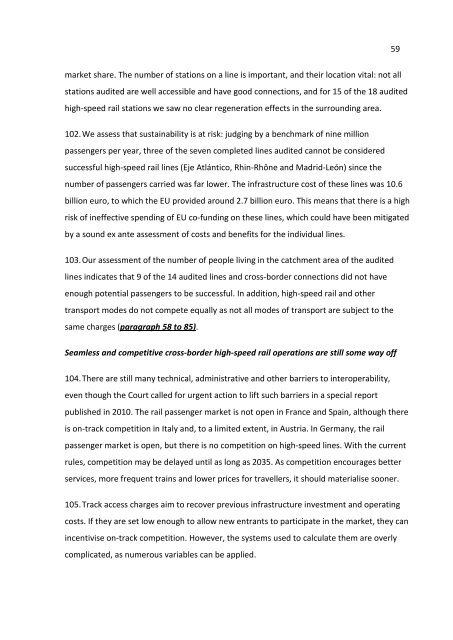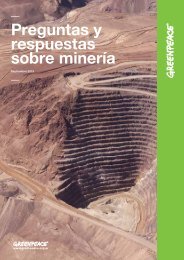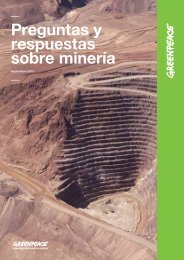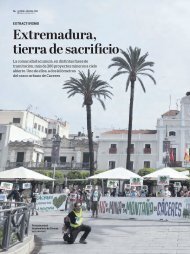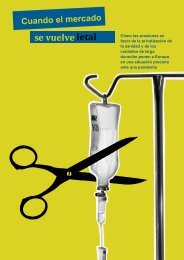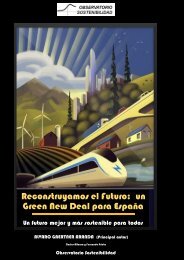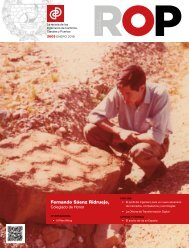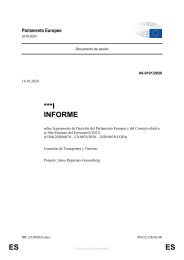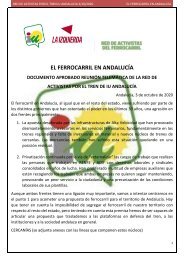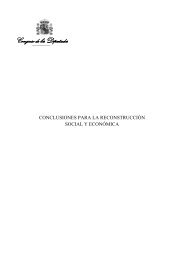La Red de Alta Velocidad Europea: Más un mosaico poco efectivo que una realidad
El presente comunicado de prensa tiene por objeto ofrecer una síntesis del contenido esencial del informe especial del Tribunal de Cuentas Europeo. El texto íntegro del informe puede consultarse en www.eca.europa.eu.
El presente comunicado de prensa tiene por objeto ofrecer una síntesis del contenido esencial del informe especial del
Tribunal de Cuentas Europeo.
El texto íntegro del informe puede consultarse en www.eca.europa.eu.
You also want an ePaper? Increase the reach of your titles
YUMPU automatically turns print PDFs into web optimized ePapers that Google loves.
59<br />
market share. The number of stations on a line is important, and their location vital: not all<br />
stations audited are well accessible and have good connections, and for 15 of the 18 audited<br />
high-speed rail stations we saw no clear regeneration effects in the surro<strong>un</strong>ding area.<br />
102. We assess that sustainability is at risk: judging by a benchmark of nine million<br />
passengers per year, three of the seven completed lines audited cannot be consi<strong>de</strong>red<br />
successful high-speed rail lines (Eje Atlántico, Rhin-Rhône and Madrid-León) since the<br />
number of passengers carried was far lower. The infrastructure cost of these lines was 10.6<br />
billion euro, to which the EU provi<strong>de</strong>d aro<strong>un</strong>d 2.7 billion euro. This means that there is a high<br />
risk of ineffective spending of EU co-f<strong>un</strong>ding on these lines, which could have been mitigated<br />
by a so<strong>un</strong>d ex ante assessment of costs and benefits for the individual lines.<br />
103. Our assessment of the number of people living in the catchment area of the audited<br />
lines indicates that 9 of the 14 audited lines and cross-bor<strong>de</strong>r connections did not have<br />
enough potential passengers to be successful. In addition, high-speed rail and other<br />
transport mo<strong>de</strong>s do not compete equally as not all mo<strong>de</strong>s of transport are subject to the<br />
same charges (paragraph 58 to 85).<br />
Seamless and competitive cross-bor<strong>de</strong>r high-speed rail operations are still some way off<br />
104. There are still many technical, administrative and other barriers to interoperability,<br />
even though the Court called for urgent action to lift such barriers in a special report<br />
published in 2010. The rail passenger market is not open in France and Spain, although there<br />
is on-track competition in Italy and, to a limited extent, in Austria. In Germany, the rail<br />
passenger market is open, but there is no competition on high-speed lines. With the current<br />
rules, competition may be <strong>de</strong>layed <strong>un</strong>til as long as 2035. As competition encourages better<br />
services, more fre<strong>que</strong>nt trains and lower prices for travellers, it should materialise sooner.<br />
105. Track access charges aim to recover previous infrastructure investment and operating<br />
costs. If they are set low enough to allow new entrants to participate in the market, they can<br />
incentivise on-track competition. However, the systems used to calculate them are overly<br />
complicated, as numerous variables can be applied.


